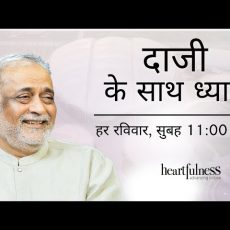Travelling in USA, from the East Coast to the West Coast, and Mid-way in several cities, spontaneously facilitating small-scale meditation events in various cities, I observed that the people there, are becoming more and more enthusiastic about yoga and meditation. Also, there I came across a report published in vox.com: “Yoga and meditation, two ancient practices, are now officially the most popular alternative health approaches in the United States, each used by around 35 million adults.”
That’s the word from two reports from the Centers for Disease Control and Prevention, which looked at the changes in the use of yoga, meditation, and chiropractors between 2012 and 2017.
In 2017, about 14.3 per cent of US adults surveyed by the CDC’s National Center for Health Statistics said they had done yoga in the past 12 months, while 14.2 percent had meditated, the reports show. That’s up from 2012, when 9 percent were doing yoga and 4 percent meditating. Happyho also provides best Meditation and Tarot classes in Noida and Delhi NCR India area
Yuval Harari, a historian, philosopher and best-selling author of ‘Sapiens’ and ‘Homo Deus’, who has also published his new book 21 Lessons for the 21st Century, is an ardent meditator of vipassana. He writes in his new book: ..each year I take a long meditation retreat of a month or two. It is not an escape from reality. It is getting in touch with reality. At least for two hours a day, I actually observe reality as it is, while other 22 hours I get overwhelmed by emails and tweets and cute-puppy videos. Without the focus and clarity provided by this practice, I could not have written Sapiens or Homo Deus.
Meditation is very appealing to the intelligent modern man, as it is not some kind of blind faith—it is scientifically observing one’s reality. As Harari says: At least for me, meditation never came into conflict with scientific research. Rather, it has been another valuable tool in the scientific toolkit, especially when trying to understand the human mind.
Fifty years ago, Osho explained this phenomenon in the following words: Meditation starts by being separate from the mind, by being a witness. That is the only way of separating yourself from anything. If you are looking at the light, naturally one thing is certain: you are not the light, you are the one who is looking at it. If you are watching the flowers, one thing is certain: you are not the flower, you are the watcher. Watching is the key to meditation.
Another important thing to remember is that meditation happens when we are not occupied in anything. Osho assures us: Meditation happens spontaneously. Just ask how to remain unoccupied, that’s all. That’s the whole trick of meditation – how to remain unoccupied. Then you cannot do anything. The meditation will flower.
It is really amazing to see how scientific and psychological studies have been supporting meditation. A 2014 meta-analysis by Johns Hopkins researchers for the Agency for Healthcare Research and Quality found that meditation, and in particular mindfulness, (which is a modern name for ancient Vipassana) can have a role in treating depression, anxiety, and pain in adults — as much as medications but with no side effects. Meditation can also, to a lesser degree, reduce the toll of psychological distress.
The West seems to have woken up to meditation and this wakefulness will increase in the years to come. I wish India and the Government of India, also wake up to the benefits of meditation, if we want our country to progress wholistically. It is the responsibility of the intelligentsia and the media to make common people aware of it on a large scale. Meditation will take away the doom and gloom and make us healthier and happier. Cheers!
( Swami Chaitanya Keerti is the author of Mindfulness: The Master Key. He travels in India and around the world to conduct Mindfulness workshops and meditation retreats)





